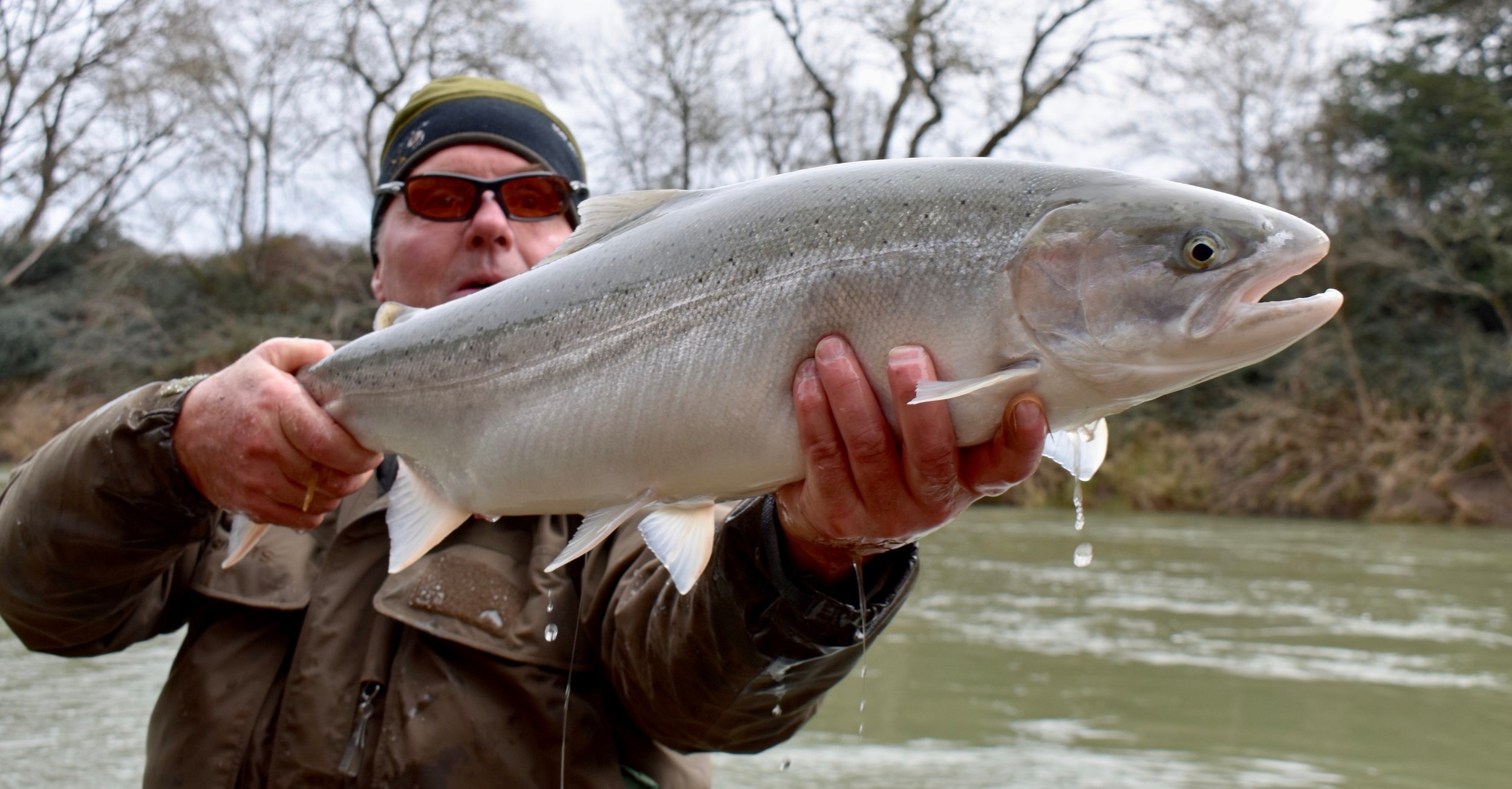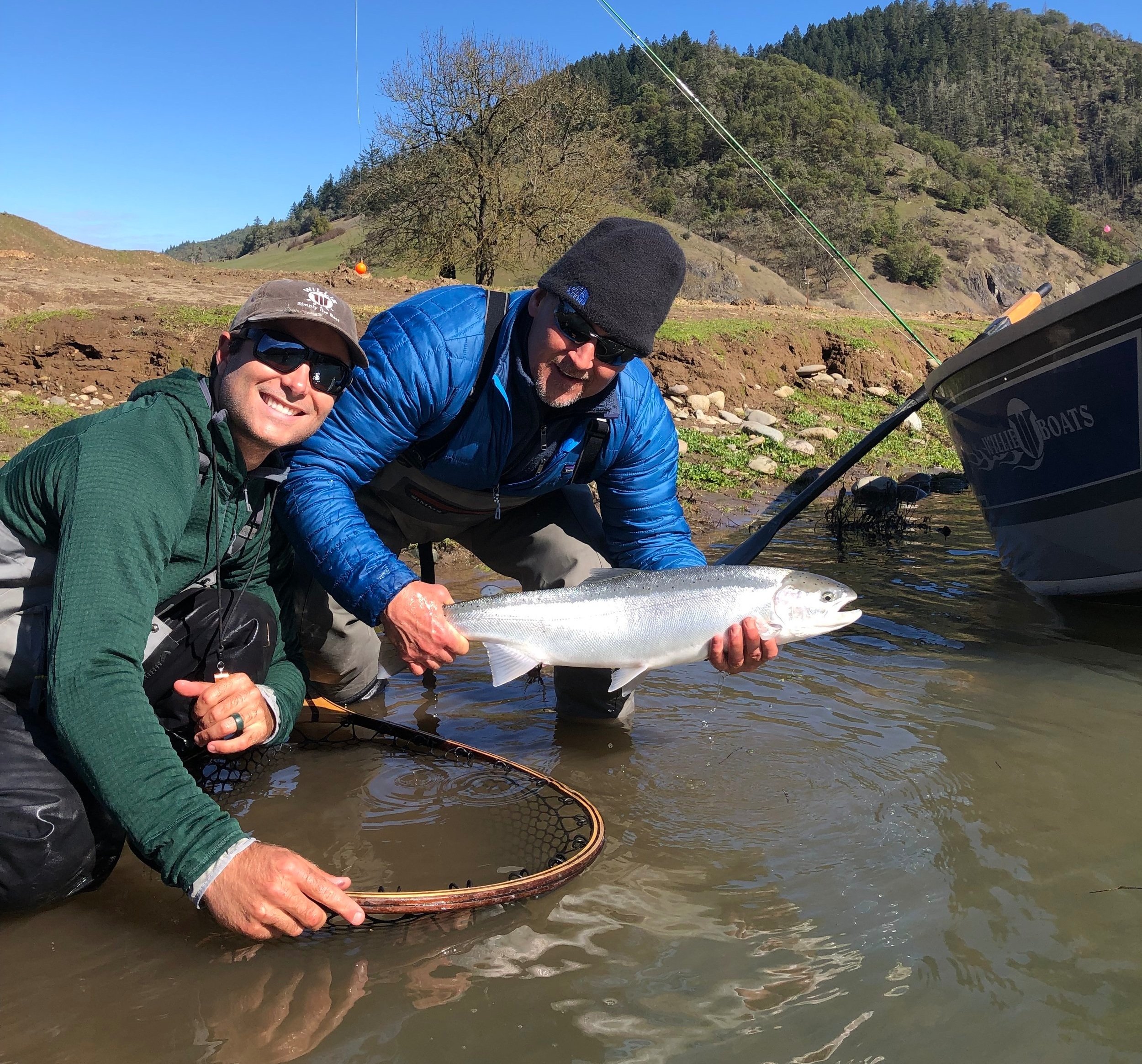From December - April the rivers and streams of Southern Oregon see noteworthy runs of Winter Steelhead. The wide variety of river types across the region allow anglers the ability to stay in good fishing conditions in all but the worst winter storms.
Most Southern Oregon Steelhead gradually make their way upstream over the season, but all rivers in our area feature a few fast running fish that make it into their spawning areas in a flash. It’s never a bad idea to target these fish early and high in the system as these can often be the largest, meanest and most memorable of the season.
When’s the best time to go?
Any time you can!
By February, nearly all of the Southern Oregon streams we guide have fishable numbers of Steelhead, and we simply target these fish based on which of our 7 area steelhead rivers provide the best conditions for the trip. We run our trips out of Ashland, OR and the greater Rogue River Valley, allowing easy day trips to all but the Coast and North Umpqua River.
Later in the season, including March and April the upper reaches of our rivers are typically fishing the best and have high concentrations of steelhead. We love fishing the spring months as water temperatures are often a bit warmer, the days are longer and the stream side vegetation is bursting to life. The Upper Rogue is a great, spring, steelhead river.
Winter Steelhead fly fishing in its truest form is actually quite simple. Most of the challenge to catching these fish on a regular basis can be boiled down to two main factors: Conditions, and location. I have found steelhead will eat a bottle cap in the right mood, and when fishing is tough, but conditions are good, I’d bet you that X-Ray river goggles would show that all the great water you were fishing didn’t have any fish in it after all. This is where the river knowledge of a local guide can come into play and help you find the fish of a thousand casts with more predictability.
What conditions to look for?
In general we look for a dropping or somewhat stable river in winter and spring. As each system in our region reacts differently to storms, rain, snow, melt and erosion, we rely on the experience hundreds of days a year on the water to help us stay on the fish and give our guests the highest chance of success.
Both swing fishing with spey rods and indicator fishing are effective ways to take Winter Steelhead. Higher water and heavy currents are the norm, as well as cold water that slows fish metabolism. Deep water nymphing is by far the most productive method, but there is no higher challenge than swinging up steelhead in the winter. Patience and persistence can benefit you greatly.
How to catch them?
To catch winter steelhead, a good place to start is with a 7 or 8 wt rod for both swing fishing and indicator fishing. Remember, spey and single hand setups are different!
For swinging winter steelhead, try a short Skagit style shooting head, a 10ft sink tip of T-11 or 14 and a large fly that will stand out against the often faster and colored water of winter. Look for water with a walking pace. Think low, and think slow. Swinging up these fish is a matter of patience, determination and efficiency.
To be in the zone nymphing, adjust the depth of your (heavy!) fly to be 1.5 times the depth of the water you intend to fish and focus on a long dead drift. Remember when nymphing deep it takes a few seconds longer for your flies to hit the fish zone. Cast further upstream in the lane with a longer cast to compensate and then get good at stack mending to continue the drift down stream.
Worthington Fly Fishing has learned the intricacies of successfully catching Southern Oregon Steelhead on the fly and we love connecting our guests with the Northwest’s most fabled fish. If you’re looking to learn more about Winter Steelheading in Southern Oregon and having a great day on the water consider booking a trip with once of our local guides to unlock the mystery of these these amazing fish.
Tight lines!



